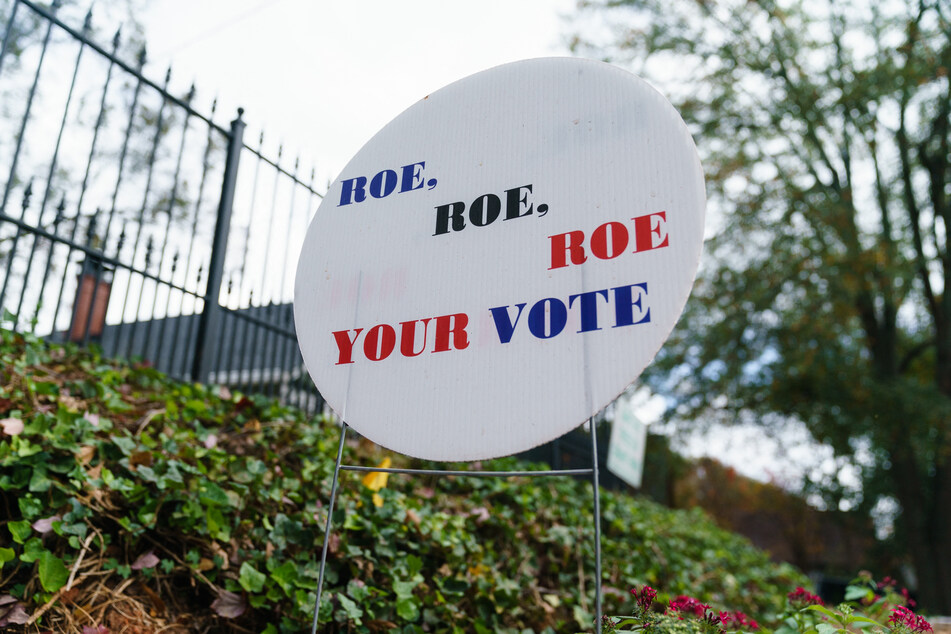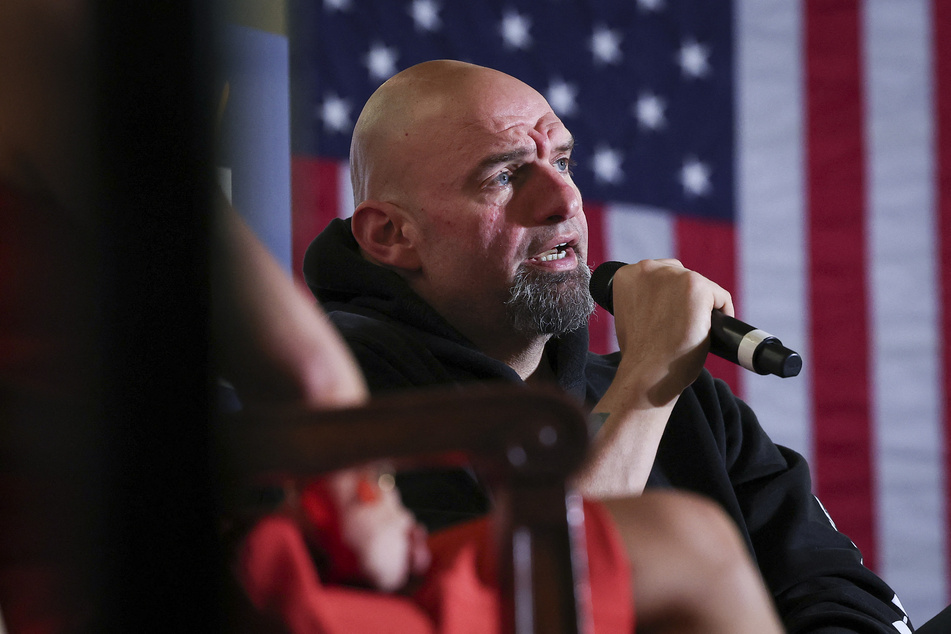Election Day: What to watch for in the 2022 midterms
Washington DC - In one sense, the fundamentals of this election season have remained remarkably consistent. President Joe Biden's approval ratings languish in the low 40s. High inflation stubbornly persists. And odds have stayed stacked against the sitting president's party.

In another sense, nothing about this moment feels predictable. The cycle has been bookended by two acts of political violence – the January 6, 2021, siege of the US Capitol and the assault on House Speaker Nancy Pelosi's husband – that underscore the country's jittery mood. The Supreme Court reversed nationwide protections for abortion rights that had remained in place for nearly 50 years. Former President Donald Trump is facing an unprecedented array of legal troubles, even as he hints at plans to make another White House bid.
But with Election Day approaching Tuesday, the laws of political gravity appear to have the upper hand over the volatility of a nation on edge. Republicans are favored to flip at least one chamber in Congress, and most Democrats have become increasingly glum about their party's prospects.
"Historical trends are difficult to break, and the fundamentals in this election remain in place: When the economy is struggling, the party (that holds the White House) suffers," said Nathan Gonzales, editor and publisher of Inside Elections, a nonpartisan campaign analysis newsletter.
Still, an air of suspense remains. The GOP advantage has been uneven across 435 House races, 34 Senate contests, 36 gubernatorial elections and scores of other state and local campaigns, according to recent polling and early voting data. That gives some Democrats a glimmer of optimism.
While the abortion issue has receded from the forefront of many people's minds, experts say even a few additional voters galvanized by the Supreme Court's reversal of Roe v. Wade may be enough to affect tight races.
The left is relying on "surge Democrats"

After the Dobbs v. Jackson Women's Health Organization ruling was handed down in June, Democrats saw tangible evidence of a boost, over-performing in five subsequent special elections and decisively defeating an antiabortion referendum in Kansas.
The party hoped the backlash would remain strong enough in November to mobilize those who powered its success in 2018: younger people who leaned Democratic but voted inconsistently.
These "surge Democrats," as pollster Celinda Lake calls them, would be necessary for her party to exceed expectations. "A record number of young Democratic women registered to vote," Lake said. "But are they going to turn out to vote?"
"We need to win women by more than we lose men," she added. "That's the key."
Republicans view abortion as a fading factor, and a slew of polls back them up, with inflation emerging as the runaway top issue on voters' minds. Between the economic troubles and Biden's lackluster numbers, they bet this year will fall into the pattern of past midterms — a referendum on the occupant of the White House, whose party has lost ground in all but two contests after World War II.
Biden has urged voters to put another issue at the top of mind: the health of American democracy. He has given two prime-time speeches on threats posed by Republicans who deny the outcome of the 2020 election and have cast doubt on their willingness to accept the results of their races if they lose this week.
"I know there's a lot at stake in these midterm elections, from our economy, to the safety of our streets, to our personal freedoms, to the future of healthcare and Social Security, Medicare. It's all important. ... But there's something else at stake: democracy itself," President Biden said in an address last Friday.
Democratic candidates fight to keep blue states while taking on red states

The limits of Democrats' abortion-centric strategy have emerged in blue states like New York, where the party has suddenly found itself on the defensive in areas that Biden handily won in 2020.
"There's been a real bifurcation of the House landscape between red and purple states vs. blue states," said David Wasserman, who analyzes House races for the nonpartisan Cook Political Report with Amy Walter. "In blue states, where Democrats control both state and federal government, they're being blamed doubly for high crime and inflation. In purple and red states, Democrats have been more successful in making it more of a choice election since Republicans pushed for abortion bans."
There's also the topic of gun control and border security, both of which have joined abortion and inflation as areas of concern in Texas' governor race, where Democratic candidate Beto O'Rourke is hoping to unseat Gov. Greg Abbott, while progressive candidates like Rochelle Garza and Claudia Zapata look to unseat Republicans such as attorney general Ken Paxton and Rep. Chip Roy.
The emergence of California as a weak spot for Democrats marks a stunning reversal of expectations since the beginning of this year. After the latest round of redistricting, GOP Reps. Mike Garcia of Santa Clarita, David Valadao of Hanford, and Michelle Steel of Seal Beach, all of whom won narrowly in 2020, were drawn into less friendly districts. Democrats, who anticipated playing defense for scores of incumbents elsewhere, relished the opportunity to go on the offensive.
Instead, Democratic Party committees and outside groups have largely stayed off the airwaves in the pricey Los Angeles market, which covers the entirety of five competitive districts, and have opted to use those resources to shore up incumbents elsewhere.
Southern California GOP candidates such as Garcia and Steel have had an advantage in advertising, thanks to aid from super PACs, although some Democrats, most notably Rep. Katie Porter, have amassed enough campaign funds to have a substantial spending edge.
Democrats and Republicans trade blame ahead of 2022 midterms

Some in the Democratic party blame the lack of exciting statewide campaigns. With both Newsom and Sen. Alex Padilla expected to easily win reelection, Democrats fear that there's not enough to coax their voters to the polls.
The lackluster showing in California contrasts with robust turnout in battleground states such as Georgia and Michigan, which shows that the election isn't following uniform trends nationwide. Party strategist Simon Rosenberg said that was evidence that Democratic campaign efforts could make the difference in key races.
"Democrats are over-performing in the places we're spending money," said Rosenberg, who has emerged as a vocal optimist that his party could defy the conventional wisdom on the midterms.
More than 39 million early votes had been cast nationally as of Saturday afternoon, portending a high overall turnout. Since Democrats have been more likely to vote early than Republicans in recent cycles, Rosenberg said, the numbers are "a repudiation of the notion that the energy, intensity, is only going the Republicans' way."
Michael McDonald, a University of Florida professor who tracks the early vote, said Democrats would benefit from racking up votes in advance of Election Day, when Republicans are expected to come out in high numbers. In Pennsylvania, for example, Democrats have a lopsided advantage in the mail ballots that have already been returned, which could help the party's Senate candidate, John Fetterman, tailor his campaign in the final days.
"It is to the Fetterman campaign's advantage to have those votes banked so they can do voter mobilization for people who haven't voted yet," McDonald said.
Early-voting data can be difficult to infer
But, he cautioned, it's difficult to infer from the early-voting data what the outcome will be. As an example, he cited Arizona's 2020 presidential race, when Democrats had a sizable early-voting lead, but a flood of GOP votes on Election Day ultimately left Biden with the barest of margins over President Donald Trump.
Gabriel R. Sanchez, a governance studies fellow at the Brookings Institution, said that conclusions about early-voting data are even more difficult to parse because voting patterns have changed so dramatically in recent years.
"It used to be the case that you'd expect Republicans to vote in higher rates early, primarily through absentee," he said. "But now it's 180 degrees in the other direction" – a flip that occurred after Trump disparaged voting early or by mail.
High Democratic turnout in the early vote, however, may be offset by a sluggish showing on Tuesday, Sanchez said, adding, "How we calculate elections (has) just become much more difficult."
Cover photo: MARK MAKELA / GETTY IMAGES NORTH AMERICA / GETTY IMAGES VIA AFP

